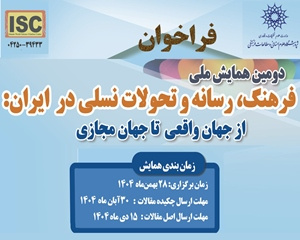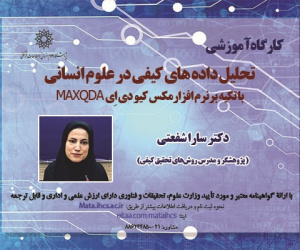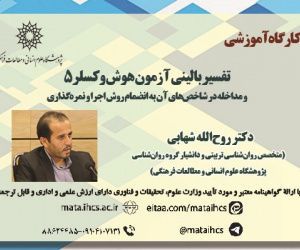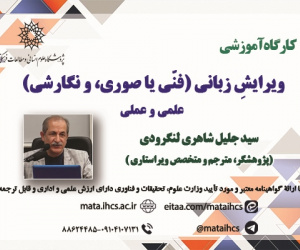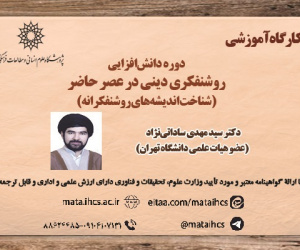دامِ نامرئی (1357)؛ بازنمودی اُتوپیایی از جامع نظارتی در حکومت پهلوی دوم (مقاله علمی وزارت علوم)
درجه علمی: نشریه علمی (وزارت علوم)
آرشیو
چکیده
مفهوم نظارت سراسربینانه در اندیشه ی میشل فوکو جایگاه ویژه ای داشته و در مطالعات اجتماعی به مثابه یکی از مولفه های اساسی برسازنده ی جوامع مدرن همواره مورد بررسی بوده است. فوکو معتقد بود قدرت های مدرن به منظور برقرار نظم در جامعه از سازوکارهای نظارتی سود می جویند. از طرفی این مفهوم اخیرا به حوزه مطالعات سینمایی نیز ورود کرده است و توجه قسمی از نظریه پردازان این حوزه را به نحوه بهره گیری از این مضمون در آثار سینمایی جلب کرده است. این مقاله می کوشد با تمرکز بر فیلم دام نامرئی نحوه ی بازنمایی نظارت را در این فیلم مورد مطالعه قرار دهد. دام نامرئی فیلم کمترشناخته شده ای در میان آثار سینمایی پیش از انقلاب است که به دستور نهاد امنیتی وقت در سال 1357 ساخته می شود. فیلم روایت گر ماجرای شناسایی و نظارت یکی از تیمساران ارتش شاه مخلوع به نام احمد مقربی است که سال ها با افسران ک.گ.ب همکاری محرمانه داشته است. پژوهش حاضر که به روش توصیفی-تحلیلی و با بهره گیری از منابع کتابخانه ای انجام گرفته است این بحث را مطرح می سازد که درحالیکه ساواک می کوشد با انتفاع از مکانیسم های مراقبتیِ الگوی نظارت سراسربینانه، بازنمودی بی نقص از جامعه نظارتی به دست دهد، روایت مقربی از چگونگی پیشبرد فعالیت های جاسوسانه اش، تصویر ایده ال حکومت پهلوی را مخدوش می سازد.Invisible Trap (1979): A Utopian Representation of the Surveillance Society in the Second Pahlavi government
Dam-e Namari (The Invisible Trap, 1979) directed by Fariborz Saleh is a lesser-known film that was produced in the last year of the second Pahlavi government at the behest of the SAVAK, the intelligence organization of the time. Following the Islamic Revolution and the subsequent sociopolitical transformations in society, the film was buried in the Iranian film archive. With the recent unearthing of the film, the history of Iranian cinema has uncovered one of the earliest cinematic productions made by a security agency, which can be considered a pioneering example of surveillance cinema in Iran. Dam-e Namari narrates the story of identification and surveillance of Ahmad Mogharebi, a Major General of the Imperial Iranian Army who was a highly influential spy for the Soviet Union's security organization, known as the KGB. Throughout the narrative, SAVAK agents attempt to uncover the mysterious identity of Mogharebi and secretly monitor his covert actions using surveillance tactics. To this end, SAVAK expands its surveillance network across the entire neighborhood where the Mogharebi resides, employing a hierarchical observation strategy. It establishes a hidden watchtower in every house with a strategic view, aiming to control and track all movements within the entire region. Turning Mogharebi's neighborhood into a disciplined area could be seen as a geographical metaphor, suggesting that SAVAK aimed to expand this approach from a segmented city to a broader surveillance society. This serves as an allegory for a political will focused on total control and occupation of space, which, from Michel Foucault's perspective, finds its highest expression in the design of the Panopticon model. Panopticon is an architectural idea introduced by the 18th-century English philosopher Jeremy Bentham. This modern prison was designed so that inmates were always under the gaze of a central authority. The spatial arrangements and lighting setups in the Panopticon are organized in such a way that, while the central observer remains hidden in the darkness, the prisoners' cells are continuously visible in the light. As a result, the prisoners in their cells are constantly monitored by an anonymous power. Michel Foucault, a French philosopher, interprets the mechanism of power in this model as a generalizable framework capable of explaining power relations in the everyday lives of individuals in modern societies. From his view, modern powers utilize the hierarchized surveillance present in Bentham's design to control individuals and maintain social order. Aligned with the prevailing ideology, the film aims to promote the government's Panopticism slogan by depicting the disciplinary order of the Pahlavi regime through the individualization and visibility of subjects via disciplinary and surveillance mechanisms. In this film, SAVAK attempts to represent itself as a virtual Panopticon, secretly capable of extending its invisible trap to render all citizens visible and therefore implicitly suggesting to the audience that they too might be under surveillance. Set on the brink of the Islamic Revolution, the film provides a powerful depiction of SAVAK's surveillance mechanisms and offers a utopian representation of a perfectly governed society under the pervasive gaze of the ruling power.
